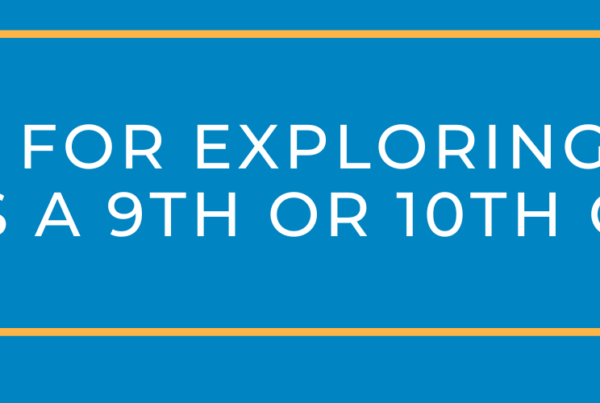 By Leslie Shown
By Leslie Shown
Spring semester is underway and – any day now – students will be submitting their course selections for the 2021-2022 school year.
The courses a student chooses to take in high school have always been one of the top factors colleges consider when making admissions decisions and, as more colleges become “test-optional,” the transcript is an even more important part of the college application. Consequently, course selection is worth some time and careful consideration.
Factors to Consider When Making Class Choices:
Courses Required for Graduation
This one is pretty easy! You need to make sure you’ve taken the courses required to graduate. Mandatory classes such as PE or personal finance can sometimes fall off a student’s radar. It can be nice to cross these off your list early in high school to free up space in your schedule later on.
Course Rigor
It can be challenging to predict how much course rigor is just right. It’s good to aim for the “sweet spot” where you anticipate your student will be challenged in a meaningful way, experience some academic stress (but not too much), and be able to earn good grades. A schedule that’s too demanding can be counter-productive, compromising a student’s confidence and leading to a drop in grades that negates the potential advantages of a rigorous schedule. The bottom line? Make sure you are challenging yourself, but maintaining good grades and leaving enough time to pursue your interests outside the classroom.
Student Interests
Beyond required courses, it’s valuable for students to be able to pursue their own interests or try something new. Having an art, music, or other hands-on elective (e.g., PLTW engineering, woodworking, racket sports) can add variety and fun to an otherwise academic-heavy semester.
Using elective opportunities strategically can be helpful for students who have a clear idea of what their major might be in college. For a student who expects to apply as a STEM major, for example, adding an elective science or computer science class can be a good idea.
Work/Life Balance
Perhaps most importantly, schedule choices need to fit a student’s needs both inside and outside the classroom. Academic engagement and growth are most possible when students feel healthy, are well-rested, and have time for the extra-curricular activities that are important to them. Finding the right balance is important and is different for every student. Parents can be a big help in encouraging students to do a reality check on just how many classes and activities they can successfully fit into a single day. Or, on the flip side, parents can help their students see that pushing themselves a bit more can be energizing and highly rewarding.





